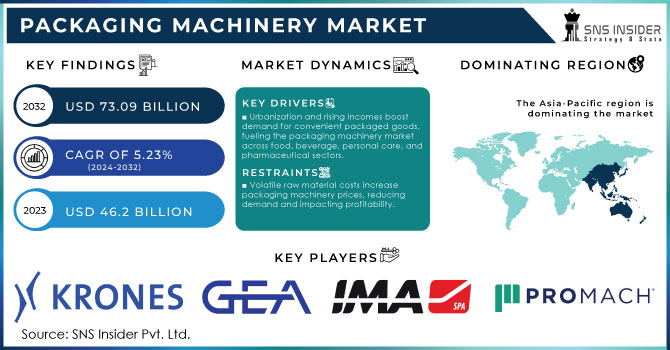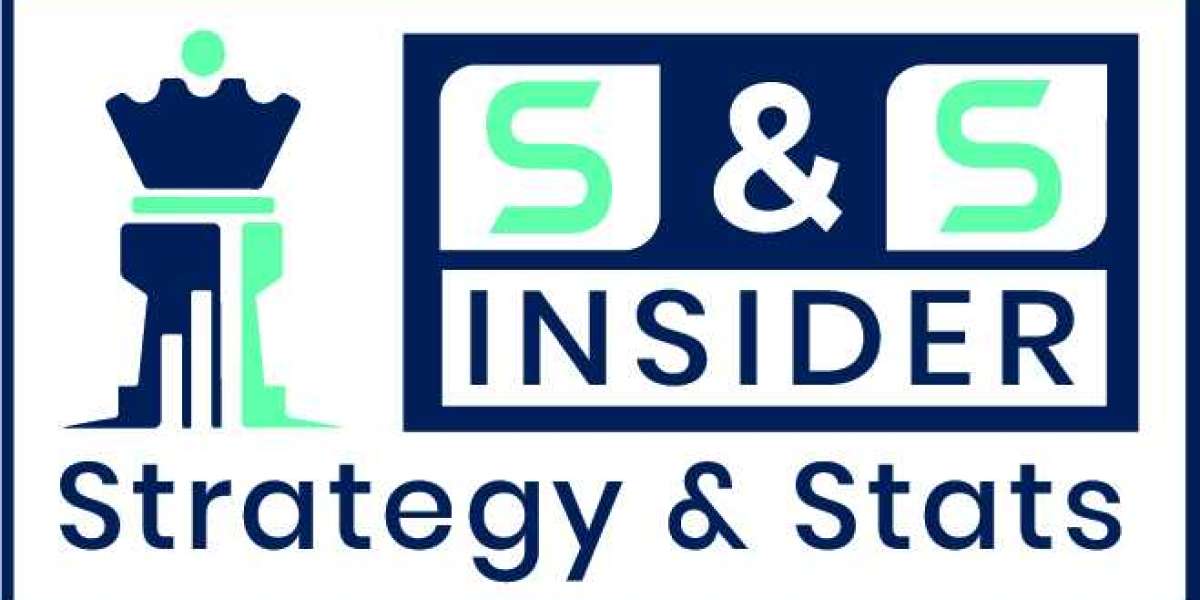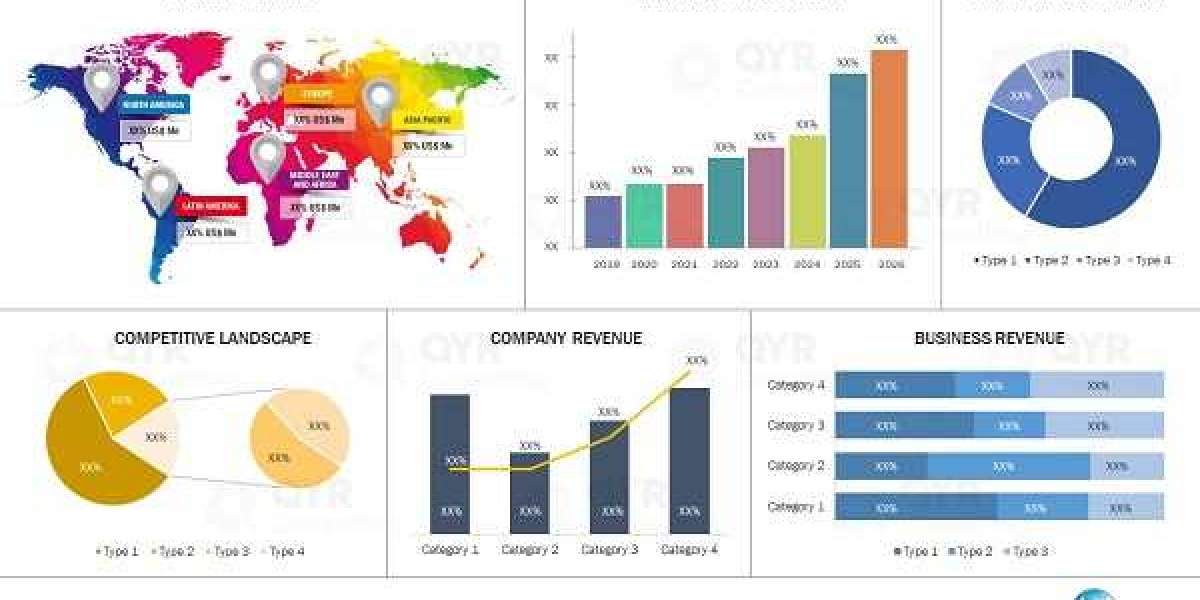The global Packaging Machinery Market is experiencing steady growth, driven by increasing demand for automation, sustainability, and efficiency in packaging processes across industries. As businesses strive for higher productivity, reduced operational costs, and enhanced packaging quality, the adoption of advanced packaging machinery is accelerating. The rise of e-commerce, the food and beverage sector, and pharmaceutical industries further contribute to the expansion of this market.
The Packaging Machinery Market size was valued at USD 46.2 billion in 2023 and is now anticipated to grow to USD 73.09 billion by 2032, displaying a compound annual growth rate (CAGR) of 5.23% during the forecast period 2024-2032. The growing emphasis on smart packaging, eco-friendly solutions, and Industry 4.0 integration is revolutionizing packaging machinery by enabling automated, connected, and highly efficient production lines. Technological advancements such as robotics, artificial intelligence (AI), and the Internet of Things (IoT) are playing a pivotal role in transforming the packaging landscape, ensuring higher accuracy, speed, and cost-effectiveness.

Key Market Drivers:
- Rising Demand for Automation and Smart Packaging
As industries move towards automation and smart packaging solutions, manufacturers are increasingly investing in intelligent packaging machinery. Features like real-time monitoring, predictive maintenance, and automated quality control enhance efficiency and minimize waste, making modern packaging solutions indispensable. - Expanding E-Commerce and Consumer Goods Industry
The booming e-commerce sector has fueled the need for high-speed, flexible, and adaptive packaging systems. With the rapid shift in consumer purchasing patterns, companies are deploying advanced machinery to handle diverse packaging requirements, including customized and sustainable packaging. - Advancements in Sustainable and Eco-Friendly Packaging
Companies across various sectors are adopting sustainable packaging solutions to comply with environmental regulations and meet consumer preferences for eco-friendly products. Innovations in biodegradable materials, recyclable packaging, and energy-efficient machinery are driving further investments in advanced packaging technologies. - Growth in the Pharmaceutical and Food Beverage Sectors
The food and beverage industry and pharmaceutical sector require stringent packaging solutions that ensure product safety, hygiene, and extended shelf life. As regulatory standards evolve, manufacturers are integrating high-precision and hygienic packaging systems to meet industry demands. - Technological Innovations in Packaging Machinery
The integration of robotics, AI, and IoT into packaging machinery is revolutionizing production efficiency. These technologies enable real-time tracking, automated adjustments, and predictive maintenance, ensuring higher productivity and minimal downtime.
Key Players
- Krones AG
- GEA Group
- A. Industria Macchine Automatiche S.p.A.
- Tetra Laval International S.A.
- ProMach
- Aktiengesellschaft
- Syntegon Technology GmbH
- Coesia S.p.A.
- Duravant
Conclusion:
The Packaging Machinery Market is on a steady growth trajectory, driven by advancements in automation, sustainability, and evolving consumer demands. As industries continue to embrace smart, eco-friendly, and high-speed packaging solutions, market players investing in research, development, and strategic collaborations will gain a competitive edge. With ongoing technological progress, the future of packaging machinery is set to redefine production efficiency, sustainability, and innovation in the global packaging landscape.
For more details @ https://www.snsinsider.com/reports/packaging-machinery-market-4297
Contact Us:
Jagney Dave - Vice President of Client Engagement
Phone: +1-315 636 4242 (US) | +44- 20 3290 5010 (UK)











